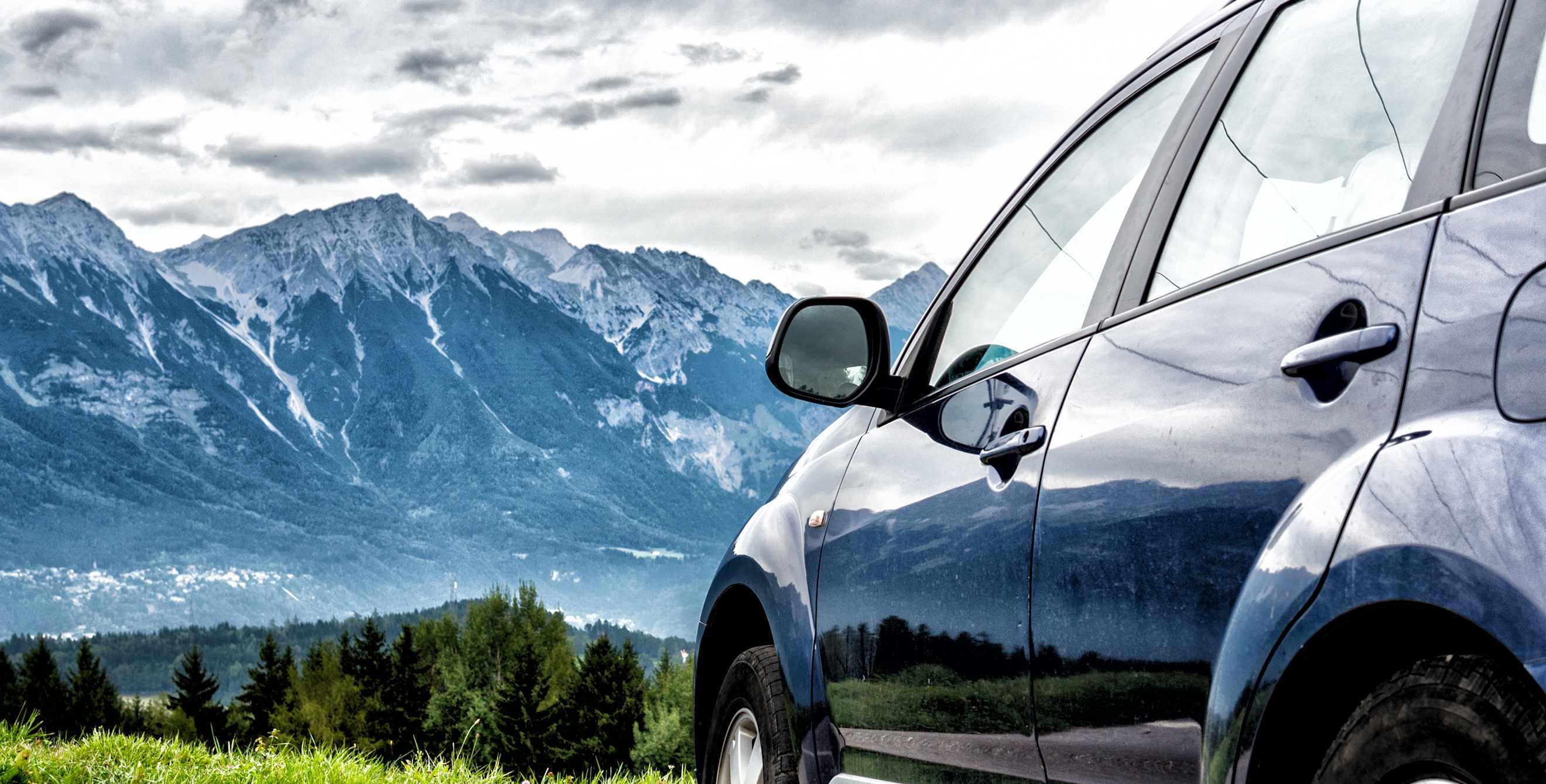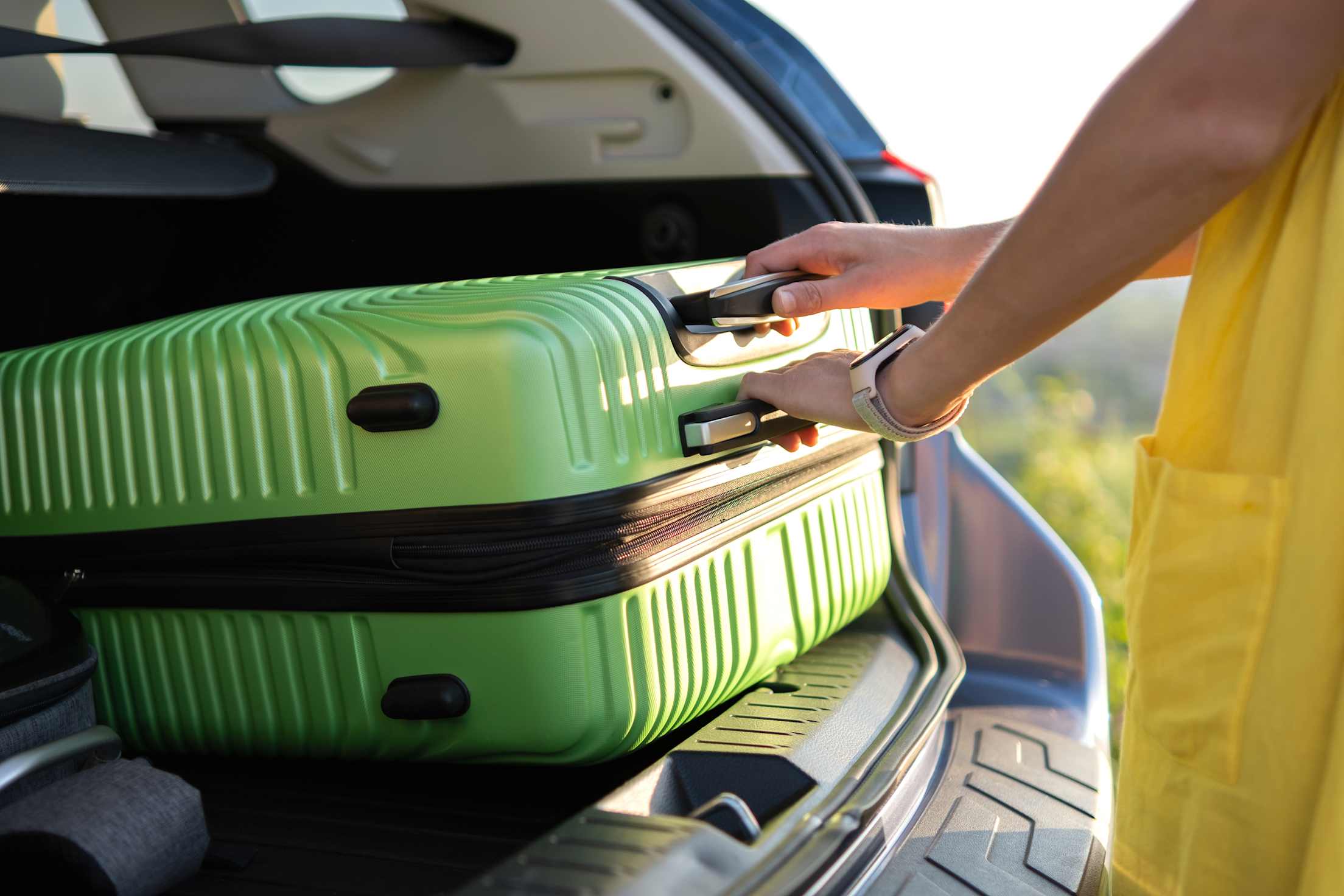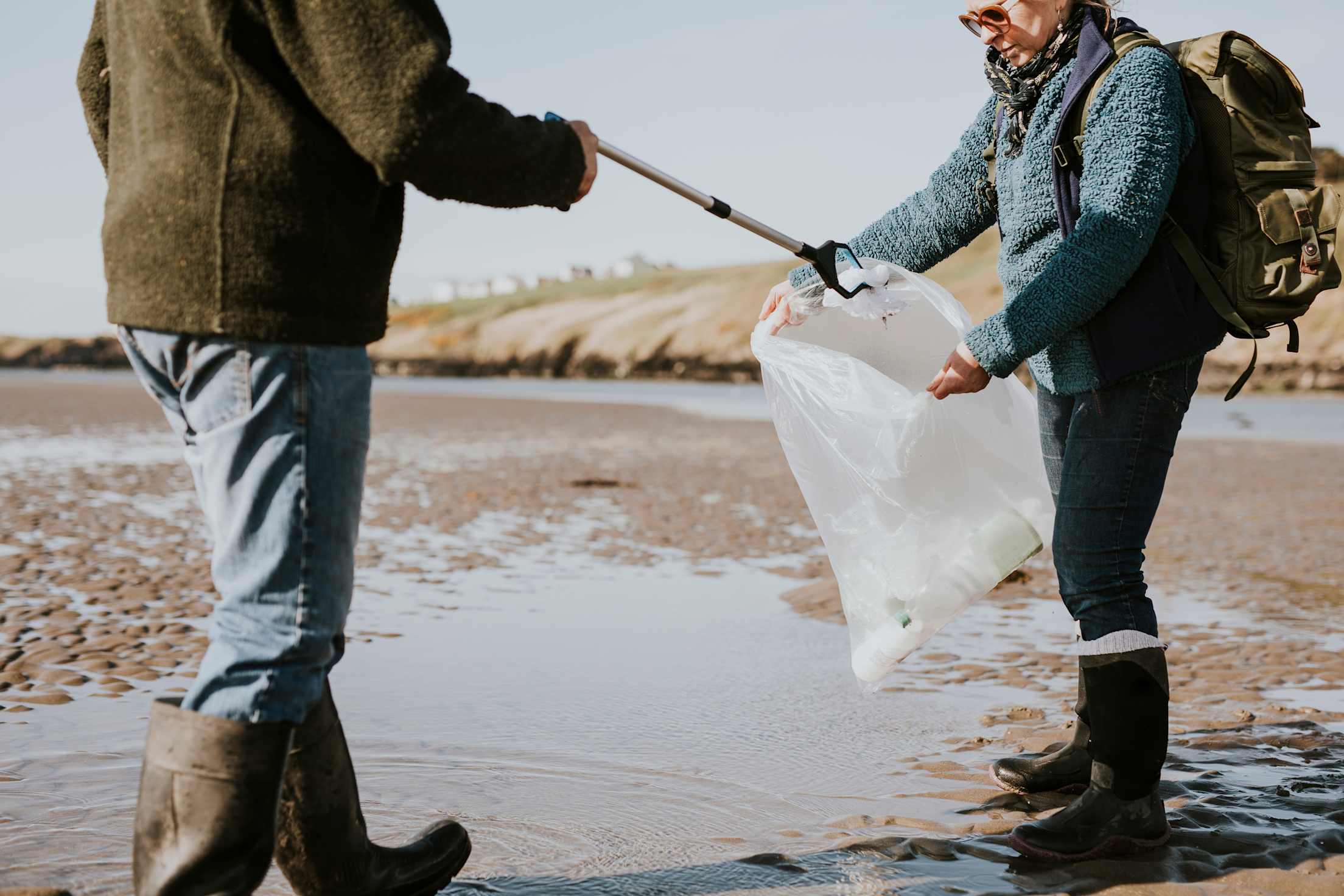
8 Tips for a More Sustainable Road Trip
Reduce the impact and cost of your summer getaway.

The most sustainable trips are often the ones we take closest to home. And where better to road trip than around the beautiful West?
With some advanced planning and simple swaps, you can make your road trip more eco-friendly. Here’s how to stretch each tank of gas or battery charge, reduce your environmental impact, and give back to the beautiful places you visit.
Map it out.
Take your list of must-see sights and desired stops and plot them out on a digital or physical map. Not only will this ensure you won’t forget to try a marionberry milkshake in Oregon or drive through the Chandelier Tree in Leggett, California, but you also won’t waste fuel backtracking or sitting in unnecessary traffic. TripTik allows you to save your route and find convenient gas stations, campsites, and restaurants along the way, while Google Maps will highlight the most fuel-efficient route to your next destination. When you get out to explore, check for traffic and confirm the best route before restarting the engine.
Tune up your chariot.
Frequent maintenance is key for safety and fuel efficiency, and it’s vital to make sure your car is ready for a long trip. Check that your tires are inflated to the pressure recommended on the driver’s side door jam: Proper tire pressure can improve your gas mileage by as much as 3 percent, according to the U.S. Department of Energy (DOE). Have your tires rotated and the alignment checked; measure your tire tread; inspect your fluid levels, belts, and hoses; and take care of any other needed maintenance.
Renting a car? Go electric, or select the smallest (ideally hybrid) vehicle that suits your family’s needs.
Delight in nearby hidden gems.
We’re all for the epic road trips that traveler’s flock to around the West—after all, there’s a reason Highway 1’s rugged coastline and the Grand Circle’s geological wonders are so popular. But choosing to follow the road less traveled to smaller, quieter destinations spreads out the impact of visiting and boosts smaller economies. Are there places in your own backyard you’ve overlooked or have been meaning to explore? Staying closer to home also reduces the amount of fuel you’ll burn and allows you to immerse yourself in each destination instead of just passing through.

Lighten the load.
Just because you have room in the back for your extra-large suitcase doesn’t mean you should fill it. An additional 100 pounds can reduce your fuel efficiency by up to 1 percent. Pack only what you need, leaving the nice-to-haves and unnecessary car clutter behind. If you’re going to be on the road for a week or more, pack no more than seven days worth of clothes for each person and plan on doing laundry. Not only will it be easier to find what you need, but it will also save you time unloading and repacking at each overnight stay.
Cargo boxes and roof racks can help you haul gear and make room for travel companions, but they can also significantly increase aerodynamic drag and drain your tank or battery. A large, blunt cargo box on the roof can reduce fuel economy by up to 25 percent when driving 65 to 75 mph, according to the DOE. If you absolutely need the extra space, opt for a rear trailer hitch box instead.
Smart Tip: Always keep luggage and other personal items out of sight when you stop, and fully unload the car each night to prevent break-ins and theft.
Slow your roll.
On long, dull highway stretches, It can be tempting to inch the speedometer up, especially if you have a meltdown brewing in the backseat. But driving at or below the speed limit can help keep you safer while stretching your gas tank further. Reducing highway speeds by 5 to 10 mph can increase fuel economy by as much as 14 percent. Going just 5 miles per hour over the highway speed limit is equivalent to paying an additional $0.30 per gallon, according to the U.S. DOE. Use the calculator from fueleconomy.gov to see how much you can save in your particular vehicle by slowing down.
Smart Tip: Use cruise control on straight highways to reduce temptation and maintain a steady speed. Does your car have a driver scoring or feedback program? Use it! Doing so can help you improve your gas mileage by 3 to 10 percent.
How you drive on city streets and in traffic can have an even bigger impact. Rapid braking and aggressive acceleration can reduce your mileage by up to 40 percent according to DOE estimates. Slow down, take a deep breath, and explore the places you’d be tempted to drive past instead of zooming off to the next stop or growing ever more agitated in traffic. Remember, you are on vacation.
Don’t idle.
We’ve all heard that during short stops it’s better to keep the engine running, but that’s not true with modern cars. Today’s diesel and gasoline vehicles aren’t damaged or degraded by being turned on and off frequently. You waste gas idling and release harmful emissions that contribute to smog and climate change. Idling for just two minutes uses the same amount of gas it takes to drive roughly a mile, according to the San Francisco Department of the Environment. If you’ll be waiting more than 10 seconds, you’ll save more fuel and produce fewer emissions by turning off the engine.

Ditch the trash.
Paper coffee cups with two sips left, overflowing drive-through bags, empty plastic bottles: Waste quickly piles up on long drives. But it doesn’t have to. A little planning ahead can help you avoid the bulk of the trash. Pack a cooler with snacks and meals in reusable containers to replace packaged and fast foods. Buy snacks in bulk bins and bring them in washable baggies to munch on the go. Picnic or sit down at a restaurant instead of hitting the drive-through.
Reusables to pack:
- Silverware, cloth napkins, and containers to eat on the go.
- Silicone bags to stash restaurant leftovers or a second cookie for later.
- Refillable water bottles and coffee mugs.
- Reusable bags for groceries and shopping.
Don’t toss anything out the car window while driving or on the ground while hiking, not even food items such as apple cores, fruit peels, or nutshells. Doing so is littering, which is illegal. Plus, these biodegradable food items take weeks or years to break down, and they can harm wildlife, disrupt ecosystems, and disturb other visitors. If you can’t find the proper trash or recycling bin, take it with you to your next destination or stash it away to properly dispose of it when you get home.

Do good.
Volunteering or giving back can be incredibly rewarding and help you get to know a new place on a deeper level. Many national, state, and county parks have programs that can use enthusiastic helpers. Contact local organizations to find out if you can participate during your journey.
But you don’t have to spend hours cleaning a beach or maintaining a trail to make a difference. Pick up litter when you see it and always clean up after your pet. Let drivers merge in front of you. Smile and say hello to locals. Shop at independent grocery stores and shops. Eat at restaurants that support local farms. Buy art from an artist immersed in the community. Book tours with companies that pay their employees fairly and give back. Practice leave no trace principles, whether you’re an hour from home on a local trail or ambling down a city street 500 miles away. The little things add up, and every good deed can boost your mood and leave you with found memories to look back on later.